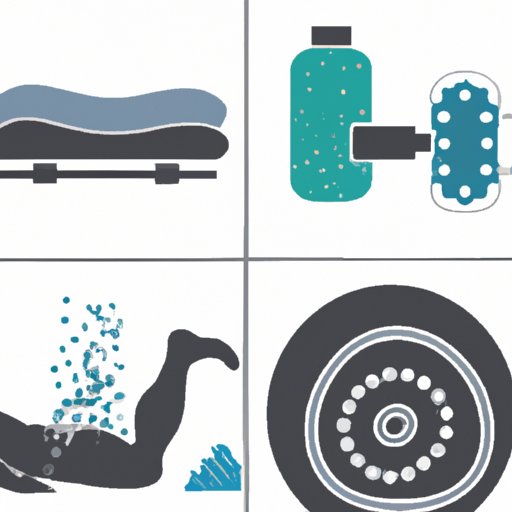Introduction
Working out can be an incredibly rewarding experience that helps us stay healthy and feel great. But if you push yourself too hard, you may find yourself dealing with sore muscles afterwards. Fortunately, there are plenty of strategies you can use to help alleviate muscle pain and discomfort.
This guide will provide you with the ultimate tips for helping sore muscles after working out. We’ll cover everything from taking a hot shower to using a foam roller to applying ice and heat. Keep reading to learn more!
Take a Hot Shower
Taking a hot shower might be one of the easiest ways to reduce muscle soreness after a workout. The warm water relaxes your muscles and increases circulation, which can help reduce inflammation. It also feels great on tired, aching muscles.
To maximize the benefits of a hot shower, try adding essential oils like lavender or peppermint. These oils have proven anti-inflammatory properties that can help reduce swelling and pain. You can also add Epsom salts to your shower, which contain magnesium and can help increase circulation.
Use a Foam Roller
Foam rolling is a popular technique used to reduce muscle soreness after a workout. It works by breaking up adhesions in your muscles and releasing tension. This can help reduce pain and improve flexibility.
To use a foam roller, start by positioning yourself on the roller so that the area you want to target is supported. Roll back and forth slowly and apply pressure as needed. Make sure to stop and hold each spot for 10-30 seconds before continuing. Do this for 1-2 minutes per muscle group.
Apply Ice or Heat
Applying ice or heat to sore muscles after a workout can be beneficial. Applying ice helps reduce inflammation and pain, while applying heat increases circulation and relaxes your muscles. Depending on what your body needs, you can choose either one or both.
If you decide to use ice, wrap it in a thin cloth and apply it to the affected area for 15-20 minutes at a time. If you choose to use heat, use a heating pad or hot water bottle and apply it for the same amount of time.
Get a Massage
Getting a massage is another great way to reduce muscle soreness after a workout. Massages can help break down adhesions in your muscles and release tension. They also increase circulation and promote relaxation.
When choosing a massage therapist, make sure to look for someone who has experience working with athletes. Ask them about their techniques and make sure they understand your goals. A good massage therapist can provide invaluable relief.
Stretch it Out
Stretching can be highly beneficial for relieving muscle soreness after a workout. Stretching helps reduce tension in your muscles and improve flexibility. It also increases blood flow, which can help reduce inflammation.
Try to focus on dynamic stretches, which involve movement. Some examples include arm circles, leg swings, and hip circles. Hold each stretch for 10-15 seconds and repeat 2-3 times. This will help target the affected muscles and reduce pain.
Hydrate
Proper hydration is essential for reducing muscle soreness after a workout. When you exercise, your muscles lose water, which can lead to dehydration and increased pain. Make sure to drink plenty of water before, during, and after your workout.
Most experts recommend drinking 8-10 glasses of water per day. If you’re exercising intensely, you may need to drink even more. Pay attention to your body and listen to what it’s telling you.
Take an Epsom Salt Bath
Taking an Epsom salt bath is another great way to reduce muscle soreness after a workout. Epsom salt contains magnesium, which helps draw toxins from your body and reduce inflammation. It also feels amazing on tired, aching muscles.
To prepare an Epsom salt bath, add two cups of Epsom salt to a warm bath and soak for 15-20 minutes. Make sure to drink plenty of water afterwards, as Epsom salt can cause dehydration.
Conclusion
If you suffer from muscle soreness after a workout, there are plenty of strategies you can use to reduce the pain. Taking a hot shower, using a foam roller, applying ice and heat, getting a massage, stretching, hydrating, and taking an Epsom salt bath are all great options.
(Note: Is this article not meeting your expectations? Do you have knowledge or insights to share? Unlock new opportunities and expand your reach by joining our authors team. Click Registration to join us and share your expertise with our readers.)
